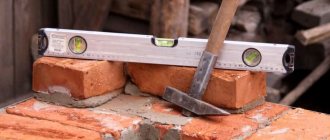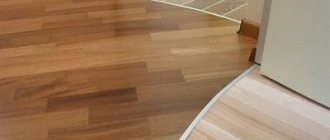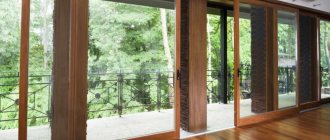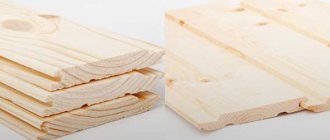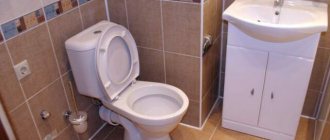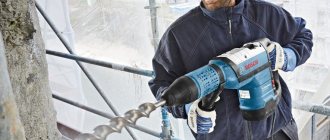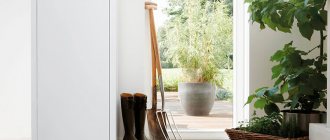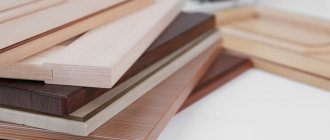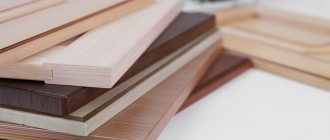Today we will try to figure out the question of how to choose linoleum for your home in terms of quality and reasonable price from the variety of options that building materials stores offer us.
Linoleum still remains one of the most affordable and popular floor coverings, so the topic is relevant.
I hope that this article will help you not to succumb to advertising tricks and, guided not by your own emotions, but by the information received, make the right choice.
If you are bored reading about the types, types and technical characteristics of linoleum, then you can immediately move on to the fifth paragraph of the article. There you can read useful recommendations directly on choosing linoleum.
Types of linoleum for floors depending on structure
Linoleum for flooring can be divided into types according to the following criteria: it has a base or backing, or it does not. The performance qualities of this flooring largely depend on this.
In addition, linoleum is divided into types depending on whether it is single-layer in structure or multi-layer. In this case, it can be either homogeneous or heterogeneous.
Let's look at all these options in more detail.
Linoleum without base
Perhaps the only advantage of this type of linoleum is its low price. Well, one more thing is that it is recommended to use it in particularly damp areas. The rest of his indicators are not so attractive.
It has a thickness of up to 1.6 mm and is characterized by low durability. The average service life of such linoleum is 5-7 years.
In addition, it only needs to be laid on a completely flat floor. Otherwise, all the irregularities and defects will be visible on it.
Currently, the baseless type of linoleum is not very common, so it makes no sense to dwell on it in more detail.
Linoleum with base
This type of linoleum is of higher quality, but its price will certainly be higher than the previous one.
There are two types of bases for such linoleum.
Warm base
Linoleum on a warm or textile basis is perceived by many as warmer, but this cannot be said unequivocally. The fact is that previously such linoleum was made with a base in the form of natural felt or pressed flax, which really have good heat-insulating properties.
But such a substrate also has negative properties - it is not recommended for use in damp rooms, such as the bathroom and kitchen, since the natural material is susceptible to rotting, the formation of fungus and other evil spirits.
For this reason, synthetic fibers began to be added to the base or replaced with a completely natural base.
Therefore, the concept of a warm base becomes somewhat arbitrary.
A positive property of this type of linoleum can be considered its ability to hide roughness and minor floor defects.
It is better to lay such linoleum in one piece without joints to prevent moisture from entering.
The resistance to mechanical stress and stretching of such linoleum is also not very high.
Foam base
Linoleum with a foam base is more versatile in use, as it can be used both in environments with high humidity and with increased mechanical loads.
This is a linoleum structure consisting of five layers.
The first outer layer is protective and is a thin film of transparent high-density polyvinyl chloride. It is this layer that is designed to protect the floor covering from abrasion.
The second layer is responsible for the aesthetic perception of linoleum, that is, for its decorative properties. It is a special paint that is applied to the surface in the form of a specific pattern during the manufacture of linoleum.
The third layer is a face layer of PVC foam on which paint is applied. On the same layer, embossing is performed, imitating parquet or laminate.
The fourth layer is made of fiberglass, which is responsible for the strength properties of linoleum. In general, the production of this floor covering begins with the application of face foam to the fiberglass, and only then the remaining layers. So, in essence, fiberglass is the first layer. But since we started counting from the outer surface, it will be the fourth one.
The fifth layer is a back PVC foam, but only thicker than the front foam. It is this layer that is responsible for the warmth, comfort, and sound insulation of the floor covering.
So we have looked at the main types of linoleum for flooring and can already begin to judge which one is more suitable for the kitchen and which is a risky option.
Homogeneous type of linoleum
The main difference between this type of flooring is that it is homogeneous in its structure and has no layers. That is, a decorative coating with some kind of pattern is not applied to its surface. This linoleum has a uniform color over the entire area. This is a disadvantage if the decorative properties of linoleum are important to you.
But this coating has its significant advantages:
- With homogeneous linoleum, it is impossible to erase a pattern or wipe a stain, since its color is uniform throughout its thickness.
- This linoleum is practically non-flammable due to the dolomite content.
- It has high strength due to the content of quartz sand in its composition.
- Such linoleum can be welded without problems, which eliminates joints between the sheets and the ingress of debris and moisture under them.
- Thanks to the properties listed above, homogeneous linoleum is very durable.
Myth #2: Only suitable for narrow rooms
Anyone who has not gone to a construction market for a long time is simply confident that the linoleum panels have not changed and there is a choice of widths from 1.5 to 3 meters. This means that in a larger room it will be necessary to make ugly joints from plastic or iron strips, and no beauty or integrity will come of it.
But we hasten to please you: everything has not been like that for a long time.
Firstly, there are now both four and five meter panels on the market, but there are certainly far fewer of them than standard ones. If you don’t find the right color from the wide canvases, then don’t worry either: no strips are needed.
Secondly, now there is a special welding for linoleum, and the seam is almost invisible. This name is, of course, very approximate. In fact, welding is nothing more than ordinary butt gluing of seams, but the composition of the fastening composition is such that it literally dissolves the linoleum and splices the pieces together. As a result, the surface comes out intact and cannot burst at the joint.
Types of linoleum for flooring
So we looked at the most famous types of linoleum. Now let's look at what types of linoleum exist depending on its purpose and technical characteristics.
Household linoleum: scope
The very name of this type of linoleum tells us the scope of use of this material. Household linoleum is intended for use in rooms with not very high traffic. These are primarily residential buildings. Most often, such linoleum is used to cover floors in hallways, bathrooms and kitchens.
In the product labeling, the first number 2 means exactly that this linoleum is household.
Recently, thanks to modern technologies and higher quality raw materials, the performance of household linoleum has improved, primarily in terms of environmental friendliness. Therefore, I increasingly use it in other areas of apartments, such as living rooms and even bedrooms.
If we say that household linoleum is intended for premises that do not have very high traffic, this does not mean that it is not of sufficient quality. It’s just that its technical characteristics correspond precisely to these operating conditions. But household linoleum is also divided into classes based on wear resistance. Therefore, for the hallway and kitchen, you can choose a class with higher wear resistance.
Of course, you can purchase linoleum with increased wear resistance. But the cost of such linoleum will also be overpriced in this case. Therefore, decide for yourself depending on the feasibility and your financial capabilities.
Semi-commercial linoleum: basic properties
Semi-commercial linoleum differs from household linoleum in that it is designed for use with more intense mechanical loads and greater traffic in the rooms in which it is used. The higher technical characteristics of semi-commercial linoleum in comparison with household ones are ensured primarily by the fact that it has a thicker protective surface layer. If for household linoleum it is in the range of 0.15-0.35 mm, then for semi-commercial linoleum it is 0.35-0.5 mm.
Thanks to this, semi-commercial linoleum is less worn out, scratched and pressed through by furniture standing on it. For this reason, all other things being equal, the service life of high-quality semi-commercial linoleum is on average 5 years longer than that of household linoleum.
It is clear that the price of semi-commercial linoleum is also higher than that of household linoleum. Therefore, if it makes sense to choose semi-commercial linoleum for residential premises, then first of all for those that are more passable and subject to heavy loads. These are hallways and kitchens.
There is probably no need to use semi-commercial linoleum in the bedroom.
It’s another matter if you consider it justified from a design point of view to use the same linoleum in all rooms of the apartment. But then it will be a good choice, but not very cheap.
Commercial linoleum: distinctive features
If semi-commercial linoleum, by and large, differs from household linoleum only in slightly better wear resistance, then commercial linoleum is a fundamentally different category. It is mainly used in public places with large crowds of people.
But in addition to high wear resistance and abrasion, it can have special properties depending on its purpose and operating conditions. This makes it possible to effectively use it for specific purposes.
For example, there is linoleum with antistatic properties, which is due to the inclusion of carbon threads in its composition.
They produce acoustic linoleum, which has high soundproofing properties.
In gyms and fitness clubs, commercial linoleum with anti-slip properties is used.
There is commercial linoleum that can withstand significant impact loads.
Despite all its positive properties, commercial linoleum is used to a limited extent in residential buildings due to its incomplete compliance with sanitary and environmental standards.
Myth No. 4: it’s not prestigious and it’s embarrassing
Here, yes, if you take the cheapest linoleum, which is painted in unnatural colors and looks like oilcloth - it is, it looks disgusting, to put it mildly. But if you choose something more expensive, with good texture and color, without any oilcloth reflections, then the floor will look pretty decent.
Often, good linoleum is much more impressive than inexpensive laminate. And more practical, which is the most important thing. You need to take care of the laminate: under no circumstances allow drops of water to get on it, otherwise it will swell... And linoleum is an absolutely unpretentious thing.
Classification of linoleum by class
For each type of linoleum there is a classification with which you can choose the right floor covering for a specific room, guided by a reasonable price-quality ratio.
Linoleum classes by wear resistance
Wear resistance is a very important indicator of linoleum, which determines how practical and durable this flooring will be. Therefore, we will start with this indicator.
In Russia, linoleum is classified in accordance with the European classification system for floor coverings EN 685. According to this classification, linoleum is designated by a two-digit index. The first number indicates the type of room in which it is recommended to use this coating, and the second indicates the type of load.
In addition, there are symbols that can be used to determine for what type of premises and for what intensity of load a particular floor covering is intended.
The easiest way to select the required wear resistance class of linoleum for your room is using the table below.
In this table, the first group corresponds to household linoleum, the second group corresponds to semi-commercial, and for the third group only commercial linoleum is suitable.
There are three classes in the residential category.
Class 21 are rooms with low traffic and low mechanical loads. This includes bedrooms and storage rooms.
22nd grade – these are kitchens and living rooms. This also includes children's rooms if the linoleum meets sanitary and hygienic standards.
23rd grade - these are corridors and hallways. That is, those premises that already have greater traffic than previous premises.
Class 31 – semi-commercial flooring begins with this class. And 31 classes are intended for hotels, offices and other public spaces. And although in this article we are choosing linoleum for the home, we will not ignore this class, since it may also be quite suitable for us, but more on that a little later.
Class 32 is intended for small firms, shops, kindergartens, but it can also be used for residential premises if you are not very limited in funds.
Class 33 is intended for premises with significantly higher traffic. These are schools, corridors and offices with a large number of employees.
Class 34 – these are large shops, cinemas, train stations.
Class 41 is already commercial. This includes premises such as sewing workshops, household appliance repair shops and other industries with not very high traffic volumes.
Class 42 is already production with high traffic and periodic use of machinery and vehicles.
Class 43 is the last and is intended for industrial and warehouse premises using equipment and mechanisms. In this case, the most wear-resistant linoleum is used.
Linoleum abrasion classes
Another indicator of the durability of linoleum is its abrasion. It is determined in accordance with the EN 660-1 standard.
There are 4 groups of floor coverings classified according to abrasion index:
- F - highly abraded;
- R - moderately abraded;
- M - slightly abraded;
- T – practically indestructible.
The abrasion of linoleum depends on its outer protective layer, or rather on the thickness and density of this protective layer.
Choose a drawing
The specificity of linoleum production allows you to apply any decorative patterns to its surface. Most often this is an imitation of parquet, tiles, stone and various natural materials. There are also bright solid colors, abstractions and geometric patterns.
Choose a pattern to match the overall design of the room, guided by your taste, but keep in mind that warm colors always make the room more comfortable, while cool shades visually enlarge the space. A small pattern gives the room volume, and an unusual abstract pattern will accentuate the furniture and decor.
Which linoleum is better to buy for an apartment?
So we come to the main question of how to choose linoleum for your home based on quality and buy exactly what you won’t have to regret in the future.
How do you choose linoleum?
You cannot answer this question in one phrase for the reason that you need to take into account several parameters and circumstances when choosing.
Well, let's start with wear resistance. To do this, we will use the table presented above.
First, we determine the category of the room in which you intend to lay linoleum.
Let's assume this will be a living space, or rather a hallway.
From the data in the table it follows that linoleum of classes 22 and 23 is suitable for hallways.
But, given that we carry abrasive sand particles into the hallway on the soles of our shoes, it is advisable to choose a floor covering with a more durable protective layer that is resistant to abrasion. This means that it is preferable to choose class 23 household linoleum or classes 31-32 semi-commercial.
In addition to sand, we bring wet snow into the hallway, which means that the linoleum should be quite moisture resistant.
If you don’t want any expensive floor coverings, then the best option in this case would be polyvinyl chloride (PVC) linoleum.
If you plan to lay the same linoleum in other rooms as in the hallway, which is justified from the point of view of interior design, then the linoleum we have chosen is quite suitable for them. True, this option will cost a little more. After all, for less trafficked rooms it was possible to choose linoleum of a lower class.
But I would recommend choosing linoleum of a slightly higher class than what appears from the table. If only because many manufacturers slightly overestimate the technical characteristics of their products.
It will be useful to watch a video in which a specialist gives recommendations on choosing linoleum.
Now some general recommendations for choosing linoleum for any type of room:
- Try to purchase linoleum from well-known manufacturers, such as Forbo, Tarkett, Grabo, Juteks-IVC and others. Firstly, the quality of their products is already known, and secondly, they value their well-deserved reputation.
- New linoleum, unfortunately, has a specific smell. But if it smells very strong and unpleasant, then this should alert you. Such products are most likely made from low-quality raw materials.
- Unfold the linoleum at least a meter and look closely at the drawing. It should be the same, without defects. Otherwise, this will indicate that you intend to purchase either low-quality products or defective ones of a lower grade. But then the price for it should be appropriate.
- The edges of the linoleum roll should be smooth, without burrs or fringes.
- Squeeze the unfolded edge of the linoleum tightly with your fingers. There should be no dent left on it. The harder the inner layers, the higher the wear resistance of the floor covering, the less it will be pressed through by furniture.
- Bend the edge of the PVC linoleum in half. In this case, there should be no whitened stripes left on the bend. Otherwise, it will indicate low quality linoleum.
That, perhaps, is all the advice on how to choose quality linoleum for your home.
At the beginning of the article, I suggested that you watch a useful and very detailed video on choosing the right door. True, it required you to indicate your email address.
If for some reason this is difficult for you, then you can simply follow the link that tells you about a very useful and very inexpensive training video course “ Installing doors with your own hands .” It allows you to save significant money on installing an interior door yourself. On this same page you can watch the above video, as well as other useful video materials, without registration.
If, in addition to linoleum, you are also interested in other floor coverings, such as laminate, then read about how to choose and install it in the article “How to lay laminate correctly.”
Good luck with your choice!
Subscribe to the latest articles on my website and receive useful information first-hand. The article subscription form is located at the top right.
Best regards, Alexander Tkachenko.
Myth #3: Very impractical and short-lived
And here we, too, as in the first block, will say: depending on what kind of linoleum.
Yes, to this day there are coatings on the surface of which the slightest pressure leaves dented marks, not to mention marks from heels and other aggressive things. But not all linoleum is like this!
There are incredibly durable floors that will serve you faithfully for decades, without losing their original appearance. But we talk about this point in more detail below, in a separate block, since the topic of making the right choice is extensive.
What is important here is the class, the top coating and many other things that are worth paying attention to.
We can only say that in 90% of cases, the base of linoleum is fiberglass, and this guarantees that the canvas will not “sit down” over time and will not deform, and there is also no reason to fear that it will tear from some little thing.
Laying features
Laying includes the following stages: preparation of the room and base, preparation of material and tools.
Household linoleum should only be laid on a leveled surface, since a thin underlay will not be able to hide floor defects.
Upon completion of the preparatory work, they proceed directly to laying the linoleum. This process does not take much time and can be carried out independently, without outside help.
It is recommended to lay the coating at a temperature of 15-25 degrees. At low temperatures, the material becomes less soft and elastic, as a result of which it may break. If linoleum was purchased in winter, it should lie indoors for at least 12 hours.
The material must be placed so that there are no gaps at the edges, but on the contrary, the sheet extends slightly onto the walls. When the linoleum is laid, trimming is performed.
GreenLine Collection
If you believe the reviews, IVC GreenLine linoleum is a constant experiment with design and color. Each collection of this brand surprises with its novelty and has its own theme.
IVC GreenLine Berlin 531 linoleum has gained particular popularity. Reviews about it are as follows: good quality, ease of installation and maintenance. The GreenLine Berlin 506 collection is in demand. IVC 544 linoleum is no less in demand. It would be more expedient to systematize owner reviews of these coatings:
- Easy to install. Due to the thickness of the substrate, there is no need to involve specialists; there is no need to prepare an ideal base before installation, since the coating well hides unevenness up to 3 mm.
- Easy and easy to clean, no special care required, linoleum provides maximum comfort for a long time.
- It has a double layer, providing increased heat and sound insulation.
